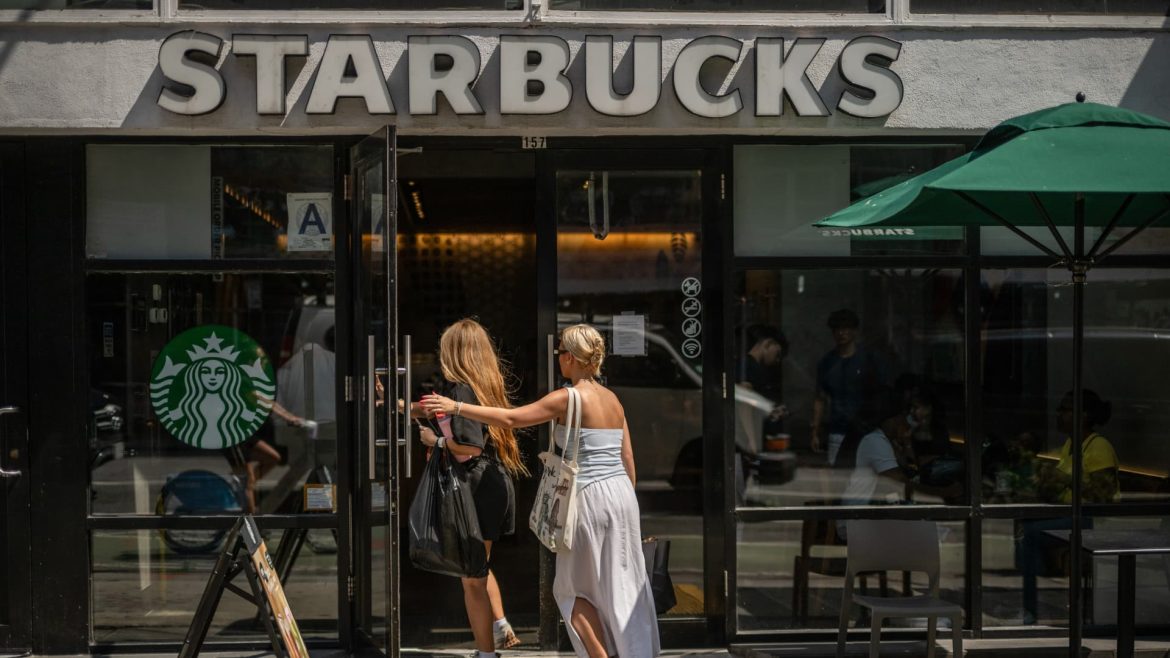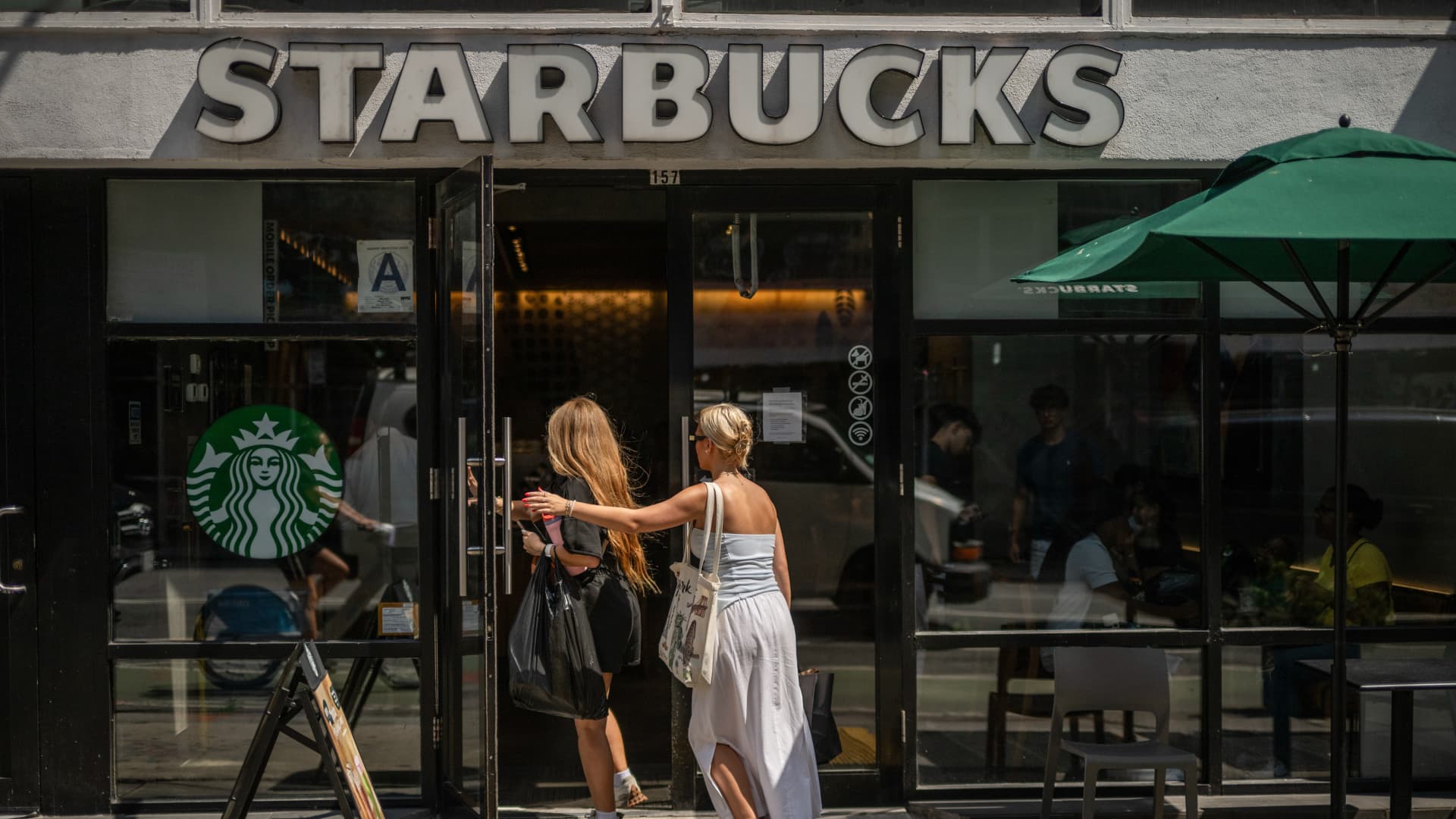The Complex Path to Revival: Starbucks’ Turnaround Under Brian Niccol
The coffee industry is a dynamic and ever-evolving landscape, and Starbucks, once the undisputed leader, now finds itself in a precarious position. The company, known for its iconic green logo and ubiquitous presence, is grappling with a series of challenges that have led to a decline in same-store sales and investor confidence. Enter Brian Niccol, the newly appointed CEO, who brings a wealth of experience and a fresh perspective to the table. His turnaround strategy, while still in its early stages, has sparked cautious optimism among analysts and investors alike. This report explores the multifaceted challenges Starbucks faces, the strategic shifts implemented by Niccol, and the potential for a sustained comeback.
The Brewing Storm: Challenges Facing Starbucks
Starbucks’ recent struggles are not the result of a single factor but rather a confluence of interconnected issues. The most glaring concern is the consistent decline in same-store sales, a metric that has decreased for six consecutive quarters. This trend is indicative of a deeper problem that transcends temporary market fluctuations. Several key factors contribute to this decline:
Intensified Competition
The coffee market has become increasingly saturated, with a proliferation of independent coffee shops and fast-food chains expanding their coffee offerings. These competitors are chipping away at Starbucks’ market share by offering unique experiences, ethically sourced beans, and customizable options. The rise of specialty coffee shops, in particular, has posed a significant threat to Starbucks’ dominance. These establishments often provide a more personalized and artisanal experience, appealing to consumers seeking a more authentic coffee experience.
Changing Consumer Preferences
Consumer preferences are evolving rapidly, and Starbucks must adapt to stay relevant. Today’s consumers are more discerning and demanding, seeking unique experiences, ethically sourced products, and customizable options. They are also increasingly health-conscious, with a growing preference for plant-based and low-sugar alternatives. Starbucks, while still offering a vast menu, needs to innovate and adapt to these changing preferences to maintain its appeal.
Operational Inefficiencies
Long lines, inconsistent service, and a complicated menu have negatively impacted the customer experience. These operational inefficiencies deter customers and contribute to the decline in same-store sales. The complexity of the menu, for instance, has led to longer wait times and inconsistent service, frustrating customers and driving them to competitors. Additionally, the lack of standardization in service quality across stores has resulted in a inconsistent customer experience, further eroding brand loyalty.
Inflationary Pressures
Rising costs of ingredients, labor, and rent have squeezed profit margins, making it challenging for Starbucks to maintain competitive prices. The company faces a delicate balancing act: maintaining prices to remain competitive while mitigating the impact of inflation on its bottom line. This is particularly challenging in an economic climate where consumers are increasingly price-sensitive.
Niccol’s Strategic Adjustments: A Recipe for Revival
Brian Niccol’s turnaround strategy is not a radical overhaul but rather a series of strategic adjustments aimed at refining the existing business model and enhancing the customer experience. His approach focuses on several key areas, each designed to address specific challenges and drive growth.
Menu Innovation and Simplification
Recognizing the need to cater to evolving consumer tastes, Niccol is overseeing a revamp of the Starbucks menu. This includes introducing new and innovative beverages and food items while streamlining existing offerings to reduce complexity and improve efficiency. The goal is to offer a compelling selection that appeals to a broader audience without overwhelming baristas or slowing down service.
One of the key initiatives in this area is the introduction of a simplified menu, which aims to reduce complexity and improve operational efficiency. This includes removing underperforming items and focusing on core offerings that drive customer satisfaction and profitability. Additionally, Starbucks is investing in product innovation, with a focus on health-conscious and plant-based options to cater to the evolving preferences of its customer base.
Operational Excellence and Efficiency
Addressing the issue of long lines and inconsistent service is paramount. Niccol is focusing on improving operational efficiency through technology investments, staff training, and process optimization. This includes leveraging mobile ordering, optimizing store layouts, and implementing standardized procedures to ensure consistent quality and speed of service.
One of the key initiatives in this area is the implementation of a new mobile ordering system, which aims to streamline the ordering process and reduce wait times. This system allows customers to order and pay for their drinks ahead of time, reducing the need for in-store ordering and improving the overall customer experience. Additionally, Starbucks is investing in staff training and process optimization to ensure consistent service quality across all stores.
Re-emphasizing the Starbucks Experience
Niccol aims to recapture the “Starbucks Experience” that once set the company apart. This involves creating a welcoming and inviting atmosphere, fostering a sense of community, and providing personalized service. This can be achieved through store redesigns, enhanced customer engagement programs, and empowering baristas to create meaningful interactions with customers.
One of the key initiatives in this area is the implementation of a new store design concept, which aims to create a more inviting and community-oriented atmosphere. This includes the use of natural materials, comfortable seating, and a focus on creating a sense of place. Additionally, Starbucks is investing in customer engagement programs, such as loyalty programs and personalized offers, to foster a stronger connection with its customers.
Strategic Expansion and Portfolio Optimization
While Starbucks remains committed to global expansion, Niccol is taking a more strategic and disciplined approach. This involves focusing on high-growth markets, optimizing the store portfolio by closing underperforming locations, and exploring new formats and channels, such as drive-thrus and delivery services.
One of the key initiatives in this area is the implementation of a new store format, which aims to cater to the evolving needs of customers. This includes the introduction of drive-thru locations, which provide a convenient and efficient ordering experience, and the expansion of delivery services, which cater to the growing demand for at-home coffee consumption.
Leveraging Technology and Digital Innovation
Technology plays a crucial role in Niccol’s turnaround strategy. Starbucks is investing in digital initiatives to enhance the customer experience, improve operational efficiency, and drive revenue growth. This includes expanding the Starbucks Rewards program, personalizing offers through data analytics, and leveraging artificial intelligence to optimize inventory management and staffing levels.
One of the key initiatives in this area is the implementation of a new digital platform, which aims to enhance the customer experience and drive revenue growth. This platform includes a range of features, such as mobile ordering, personalized offers, and a loyalty program, which are designed to foster a stronger connection with customers and drive repeat purchases.
Holding Steady on Prices
Acknowledging customer price sensitivity, Starbucks intends to maintain stable pricing, even amidst economic headwinds. This strategic decision aims to retain customer loyalty, although one analyst has noted the potential challenges it poses to the company’s financial performance.
One of the key initiatives in this area is the implementation of a new pricing strategy, which aims to balance the need for profitability with the need to retain customer loyalty. This strategy includes a range of measures, such as the introduction of value-oriented offerings and the optimization of pricing across different channels, to ensure that Starbucks remains competitive in the market.
Wall Street’s Cautious Optimism: Signs of Progress
Despite the continued decline in same-store sales, Wall Street analysts are cautiously optimistic about Starbucks’ prospects under Niccol’s leadership. Several factors contribute to this sentiment:
Early Signs of Improvement
While the overall results remain lackluster, some analysts have noted early signs that Niccol’s turnaround strategy is gaining traction. This includes positive feedback on new menu items, improved customer satisfaction scores, and increased adoption of mobile ordering. These early signs of improvement are encouraging, suggesting that Niccol’s strategy is beginning to have a positive impact on the business.
Confidence in Niccol’s Leadership
Niccol has a proven track record of turning around struggling businesses. His experience at Taco Bell, where he successfully revitalized the brand and drove growth, has instilled confidence among investors that he can replicate that success at Starbucks. Niccol’s leadership style, which is characterized by a focus on operational excellence and a customer-centric approach, is seen as a good fit for Starbucks’ current challenges.
Strategic Investments
Starbucks is making significant investments in technology, store remodels, and employee training, signaling a commitment to long-term growth. These investments, while impacting short-term profitability, are expected to pay off in the long run. The company’s focus on digital innovation, in particular, is seen as a key driver of future growth, as it enables Starbucks to enhance the customer experience and drive operational efficiency.
Strong Brand Equity
Despite its recent struggles, Starbucks remains one of the most recognizable and respected brands in the world. This strong brand equity provides a solid foundation for a successful turnaround. The company’s iconic logo, its association with quality and innovation, and its strong emotional connection with customers are all assets that can be leveraged to drive growth and differentiation in the market.
Risks and Uncertainties: The Road Ahead
While the initial signs are encouraging, Starbucks’ turnaround is not without risks and uncertainties. The company faces several challenges that could derail its efforts:
Execution Risk
Niccol’s strategy relies on successful execution across multiple areas, including menu innovation, operational improvements, and digital initiatives. Any missteps or delays could hinder progress. The complexity of the turnaround strategy, which involves a range of interconnected initiatives, increases the risk of execution challenges. Additionally, the need to balance short-term results with long-term investments adds another layer of complexity to the execution process.
Competitive Pressures
The coffee market remains highly competitive, with new entrants and existing players constantly vying for market share. Starbucks must continue to innovate and differentiate itself to maintain its competitive edge. The rise of specialty coffee shops, in particular, poses a significant threat to Starbucks’ dominance. These establishments often provide a more personalized and artisanal experience, appealing to consumers seeking a more authentic coffee experience.
Economic Uncertainty
The global economy remains uncertain, with potential for further slowdowns or recessions. Economic headwinds could negatively impact consumer spending and dampen Starbucks’ sales growth. The company’s reliance on discretionary spending makes it particularly vulnerable to economic downturns. Additionally, the impact of inflation on input costs and the need to maintain competitive pricing add another layer of complexity to the economic environment.
Changing Consumer Preferences
Consumer tastes and preferences are constantly evolving. Starbucks must remain agile and adapt to these changes to stay relevant and appeal to a new generation of coffee drinkers. The company’s ability to anticipate and respond to changing consumer preferences will be a key driver of its long-term success. Additionally, the need to balance innovation with consistency in the customer experience adds another layer of complexity to the challenge.
Labor Relations
Starbucks has faced increasing scrutiny over its labor practices, with unionization efforts gaining momentum across the country. Maintaining positive employee relations and addressing concerns about wages and working conditions will be crucial to the company’s long-term success. The company’s ability to balance the need for operational efficiency with the need to provide a positive work environment for its employees will be a key driver of its long-term success.
The Aroma of Optimism: A Conclusion
Starbucks’ journey under Brian Niccol is a delicate balancing act. The company must navigate a complex landscape of challenges, including declining sales, intensified competition, and evolving consumer preferences. Niccol’s multi-pronged turnaround strategy, focused on menu innovation, operational excellence, and digital transformation, offers a promising path forward. Wall Street’s cautious optimism reflects early signs of progress and confidence in Niccol’s leadership. However, the road ahead is fraught with risks and uncertainties. The ultimate success of the turnaround will depend on Starbucks’ ability to execute its strategy effectively, adapt to changing market conditions, and maintain its brand relevance in an increasingly competitive world. The brew is still being perfected, and only time will tell if Niccol’s recipe will restore Starbucks to its former glory.





